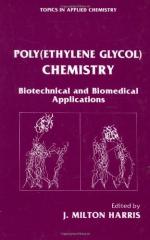|
This section contains 813 words (approx. 3 pages at 300 words per page) |

|
Overview
Ethylene glycol (ETH-uh-leen GLYE-kol) is clear, colorless, syrupy liquid with a sweet taste. One should not attempt to confirm the compound's taste, however, as it is toxic. In recent years, more than 4 billion kilograms (9 billion pounds) of ethylene glycol has been produced in the United States annually. The compound is used primarily as an antifreeze and in the manufacture of a number of important chemical compounds, including polyester fibers, films, bottles, resins, and other materials.
Key Facts
Other Names:
Ethylene alcohol; monoethylene glycol
Formula:
CH2OHCH2OH
Elements:
Carbon, hydrogen, oxygen
Compound Type:
Dihydric alcohol (organic)
State:
Liquid
Molecular Weight:
62.07 g/mol
Melting Point:
−12.69°C (9.16°F)
Boiling Point:
197.3°C (387.1°F)
Solubility:
Miscible with water, alcohol, acetone, and ether
Ethylene glycol was first prepared in 1859 by the French chemist Charles Adolphe Wurtz (1817–1884). Wurtz's discovery did not find an application, however, until the early twentieth century, when...
|
This section contains 813 words (approx. 3 pages at 300 words per page) |

|


